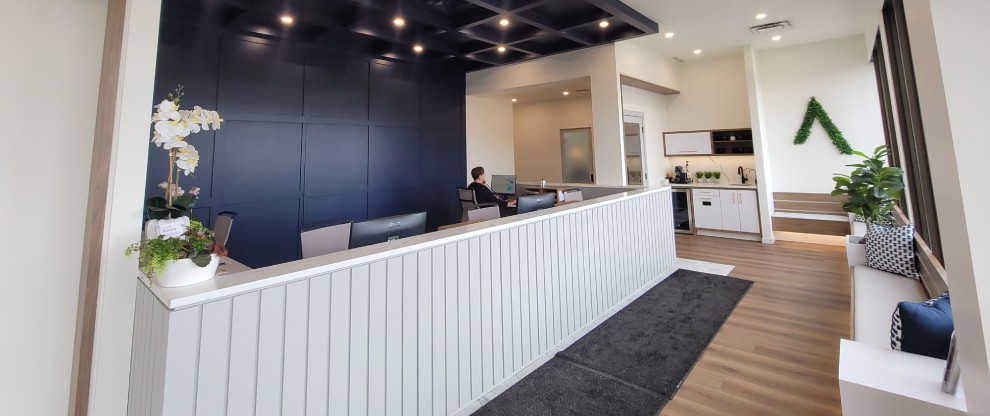Cavities are a frequent dental issue that requires care from your dentist. The good news is that filling a cavity is usually quick, with most fillings taking about 20 to 60 minutes for each tooth, depending on your specific situation.
There’s no universal timeline because every cavity is different. Factors like how deep the decay goes and where it’s located can affect how long an appointment takes.
One thing to remember is that, once a cavity has formed, it won’t heal on its own. Without treatment, cavities tend to get worse and need more care down the road.
How Cavities Can Affect Oral Health
When cavities aren’t treated, they can cause a range of issues that tend to worsen over time:
- Tooth pain: Decay can reach the tooth’s nerve, triggering sensitivity and pain.
- Infection risk: Bacteria may spread into the pulp tissue, which can result in an abscess and even tooth loss if left untreated.
- Damage to other teeth: Decay can move to nearby teeth, creating new cavities.
- Gum problems: Bacteria build-up can irritate the gums and contribute to periodontal disease, which may lead to gum recession and bone loss.
Regular dental checkups and prompt cavity treatment can help protect your teeth and gums from these concerns.
Common Signs of a Cavity
Cavities don’t always cause noticeable pain in the early stages. Look out for these common signs:
- Sensitivity to hot, cold, or sweet foods and drinks
- Pain when biting down or chewing
- Small holes or pits are visible on a tooth’s surface
- Discolouration, such as white, brown, or black spots
- Swollen or tender gums near the tooth
- Bad breath or a lingering unpleasant taste
Getting a cavity checked early can help avoid more complex treatment down the road.
Why Fillings Are an Effective Solution
Dental fillings repair the damaged part of a tooth and seal it to stop tooth decay from spreading. They help restore strength and protect the tooth’s natural shape, so you can bite and chew comfortably.
Fillings can be made from different materials, including tooth-coloured composite resin, amalgam, porcelain, or gold. The choice often depends on the location of the cavity, its size, and what works for your smile.
When cavities are treated early, a filling is often all that’s needed. This means possibly avoiding a root canal.
How Different Fillings Compare
Each filling material has its own pros and considerations:
- Composite resin: Matches the natural tooth colour, blends well, and works well for front or visible teeth.
- Amalgam: Durable and strong, often used for back teeth, but more noticeable.
- Porcelain: Stain-resistant and natural-looking, but may take longer to prepare and place.
- Gold: Very long-lasting but usually more expensive and visible.
Your dentist will help you choose the option that fits your needs, comfort, and budget.
What Affects How Long a Filling Takes
Several factors can influence how much time you’ll spend in the chair:
- Cavity size and depth: Small cavities on the surface take less time than deeper decay.
- Material used: Some materials need more preparation and curing time than others.
- Tooth location: Front teeth are easier to access; back molars can take longer to treat.
- Number of fillings: Having multiple cavities treated at once means a longer appointment.
- Additional tooth prep: Teeth with cracks or extra damage may need more shaping to support the filling.
What to Expect During a Filling
Most fillings follow a simple, step-by-step process and generally take about 20–60 minutes per tooth. Complex cases or multiple fillings may need a bit more time or an extra visit.

1. Numbing the Area
Local anaesthetic is applied to the gums to keep you comfortable throughout the procedure. If you’re feeling uneasy, don’t hesitate to ask questions or share any concerns you may have.
2. Removing the Decay
We gently remove the decayed part of the tooth using a small drill, laser, or air abrasion tool, depending on the type and extent of decay.
3. Preparing the Tooth
Once the decay is cleared, we clean and clear the resulting space. We may apply a bonding agent to help the filling stick securely.
4. Placing the Filling
The filling is applied in layers. When using composite resin, each layer is hardened with a special curing light before adding the next.
5. Shaping & Polishing
We shape and polish the filling until it feels smooth and matches your bite.
Looking After a New Filling
After getting a filling, it’s helpful to:
- Avoid very hard or sticky foods for the first day
- Expect mild sensitivity, which usually settles in a few days
- Brush and floss gently around the area
- Contact your dentist if you feel sharp edges or notice lingering discomfort
Protect Your Smile
Taking care of a cavity sooner rather than later helps protect not just your teeth, but your whole body health. Getting a filling is usually quick and straightforward, making it easier to avoid more involved care and keep your smile feeling comfortable.
Elevate Dental in Vernon is committed to providing gentle, patient-focused care that supports your mouth-body-life connection and helps you feel confident at every visit. If you’re noticing signs of a cavity or tooth sensitivity, book an appointment and elevate your smile.
















